
Nanjing Yangtze River Bridge is the first double-layer steel structure bridge open to railway and highway traffic that was designed and constructed by China independently over the Yangtze River. It is an important achievement in economic construction and a significant milestone in bridge construction of China. It is also known as "a proud bridge" because it was designed and constructed by China independently after the Sino-Soviet division and the withdrawal of all Soviet experts and assistance. In the 1970s, Premier Zhou Enlai said to foreign guests, "There are two miracles in New China: one is the Nanjing Yangtze River Bridge, and the other is the Hongqi Canal in Linxian."
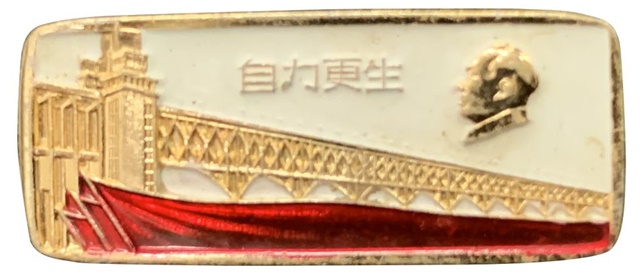
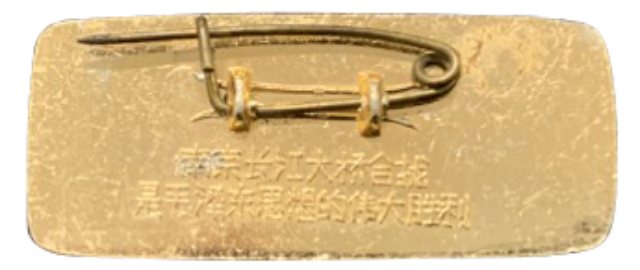
Steel Structure Museum collects a commemorative medal for closure of Nanjing Yangtze River Bridge. The commemorative medal is made of aluminum and in gold, red, and white on the front, where a head portrait of Chairman Mao Zedong, the pattern of the bridge, and Chinese characters of "self-reliance" were printed on it. The golden back is printed with Chinese characters that read "The closure of the Nanjing Yangtze River Bridge is a great victory of Mao Zedong's Thought." This commemorative medal is a powerful testimony to the struggle of New China towards independence and self-reliance.
Nanjing: A City with Many Natural Barriers
Nanjing is located in the lower reaches of the Yangtze River, which is a wide river with turbulent waters and complex engineering geological conditions. In 1908, the Shanghai-Nanjing Railway was opened to traffic. In 1912, the Tianjin-Pukou Railway was completed, but the railways in the south and north were not connected due to the barrier of the Yangtze River.
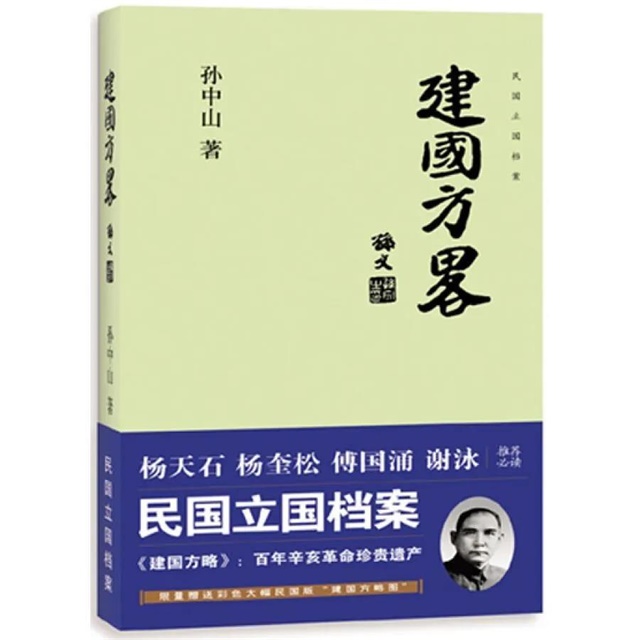
Before the National Government was founded, Mr. Sun Yat-sen had planned a river-crossing tunnel from Nanjing to Pukou in The International Development of China. In 1927, the National Government chose Nanjing as the capital and began to plan building a river-crossing railway in the following year. In 1930, according to the construction needs of the Capital Plan, the Ministry of Railways of the National Government hired an expensive American bridge expert named John Walter to conduct a field survey of Xiaguan and Pukou in Nanjing, and the conclusion was "It is not feasible to build a bridge due to the depth and turbulence of water". In October of the same year, the Ministry of Railway set up a special committee to design a movable transfer bridge for ferry purposes.
In October 1933, the train ferry in Pukou was officially opened, and it took more than 2 hours for the train to board, cross the river, go ashore, and get marshaling. Although ferry was banned "at night, in foggy days, with rising tide, and during typhoons", the travel was much more convenient than before when it took one or two days for loading and unloading of goods during transfer.
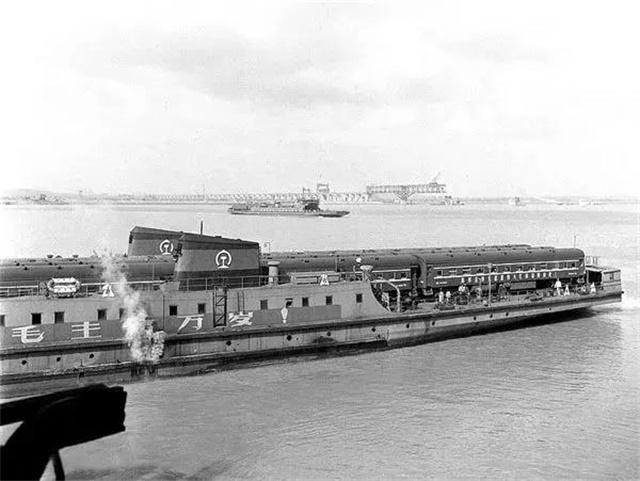
In 1936 and 1946, the National Government again planned to build a bridge over the Yangtze River in Nanjing, but both in vain due to some reason.
During the fall of Nanjing, the Japanese invaders also proposed to dig a sub-river tunnel from Yaohuamen to Pukou Town, but it ended in nothing with the defeat of Japan.
Around 1949, the daily capacity in Pukou was 20 ferries. After the founding of New China, the capacity was increased to 100 ferries a day in 1958, but it still could not meet the transportation needs. The natural barrier of the Yangtze River became a bottleneck that restricted the Beijing-Shanghai Railway.
Overcome the Natural Barrier Independently
In 1957, the Wuhan Yangtze River Bridge was completed, ending the history of no bridge over the long Yangtze River. In the process of building the Wuhan Bridge, the plan to build the Nanjing Yangtze River Bridge to connect the Beijing-Shanghai Railway was put on the agenda by New China.
In September 1958, the State Council approved the establishment of the Construction Committee for Nanjing Yangtze River Bridge which was jointly formed by Jiangsu Province and the Ministry of Railway. The Construction Committee selected the Baota Bridge as the site and proposed that the bridge be designed for railways and highways, with consideration to the navigation of 10,000t sea ship underneath. The city's needs and aesthetic requirements were also taken into account. The construction followed the principles of "achieving greater, faster, better and more economical results". After the breakdown of Sino-Soviet relations, China decided to take the path of "self-reliance", relying on itself to complete the construction of the bridge. The Ministry of Railway mobilized joint efforts across the country to overcome possible difficulties. The key participating units and personnel of the Nanjing Yangtze River Bridge project included: Construction Bridge Engineering Bureau of the Ministry of Railway responsible for design and construction unit, China Railway Major Bridge Reconnaissance&Design Institute responsible for structural engineering, Chief Commander Peng Min, Chief Engineer Mei Yangchun, Li Guohao, director of the Technical Advisory Committee, Chief Design Engineer Hu Jingming, Chief Steel Beam Designer Fang Qinhan, and Bridgehead Architect Designer Zhong Xunzheng.
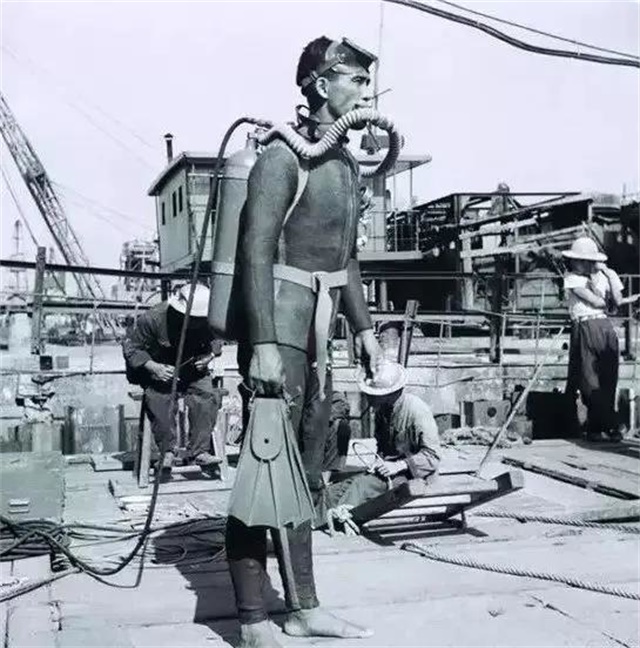
In January 1960, the construction of the bridge was formally commenced. The first building was the No. 9 Pier of the main bridge. Other bridge piers were built successively. In 1963, Ansteel successfully developed the "16 manganese" bridge steel that met the engineering requirements to ensure erection of the bridge's steel beams. In 1964, the project encountered the greatest crisis during the construction process. Due to torrents during the flood peak, No. 4 and No. 5 Piers were on the verge of open caisson and overturning. Technicians and bridge workers risked their lives fighting continuously for nearly two months, and a balanced weight method to stop swing was finally designed to save the bridge. In April 1966, 9 piers of the main bridge were completed, and in November, steel beams of the main bridge were erected from opposite sides. On August 16, 1967, closure of steel beams happened on No. 4 Pier and the work was completed on August 22. On October 1, 1968, the bridge was open to railway at first. Highway followed on December 29. The Nanjing Yangtze River Bridge was fully completed. The total cost was RMB 287 million. The project consumed 66,500 tons of steel and 384,100 cubic meters of concrete.
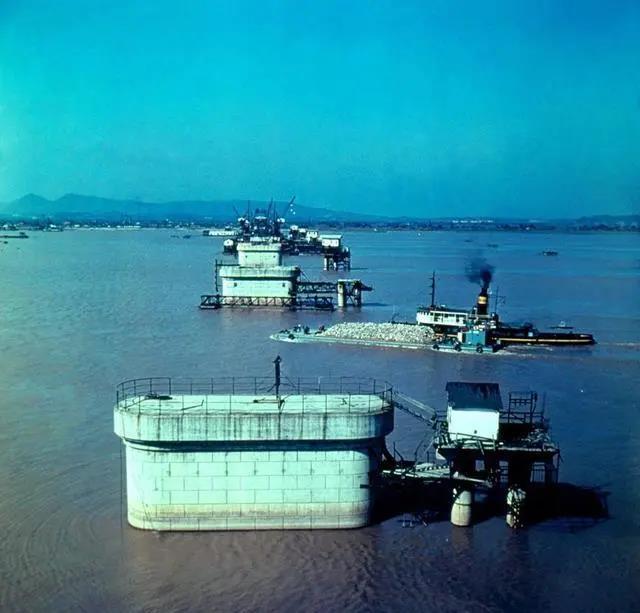
Nanjing Yangtze River Bridge was an ultimate challenge to the construction technology of large-scale facilities in New China. Apart from the "16 manganese" steel that Ansteel independently developed, some relevant units carried out scientific research and successively produced red lead primer and cloud enzyme iron oxide topcoat needed for the bridge construction; wire mesh tubes were successfully tested and applied as bridge approach for the cross-river railways and highways; the 9 piers were constructed with four methods including sinking well and pouring, which surpassed world-class construction technologies at that time; divers went for check at 82m, a depth that was "a forbidden area" then; No. 1 Pier was buried in the soil at 72m, reaching the coarse sand bed, which set a world record at that time.

Nanjing Yangtze River Bridge represented the highest level of bridge construction in China at the time and created a new chapter of China's milestone in building a super-large bridge independently. It was a monument in the history of bridge construction in China. The completion of this bridge shortened the river-crossing journey of train from one and a half hours to two or three minutes, greatly facilitates exchanges of materials and personnel between the two banks, and played an important role in promoting economic development and improving people's lives. In 1981, the Sixth Plenary Session of the Eleventh Central Committee of the Communist Party of China included the completion of Nanjing Yangtze River Bridge in the Resolution on Certain Questions in the History of CPC Since the Founding of the People's Republic of China as an important achievement. Since then, Nanjing Yangtze River Bridge has won the National Special Prize for Progress in Science and Technology and was included together with atomic and hydrogen bombs and man-made satellite in the National Major Achievement Project after the founding of the PRC.
The Prime Minister Took Command Personally
During the planning and construction of Nanjing Yangtze River Bridge, Premier Zhou Enlai personally reviewed the plan, read the survey and design reports, and devoted himself enormously to the bridge.
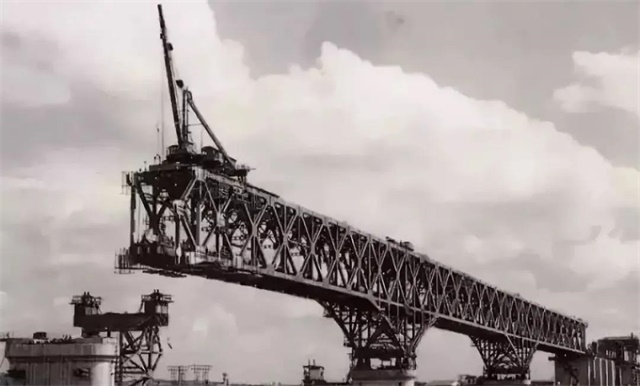
There was an clearance argument between 24m and 26m for the bridge. Premier summoned relevant leaders of the Central Government and relevant departments of the Ministry of Railway, the Navy and the shipping and transportation sector to discuss the issue and finally picked the 24m option.
Soon after the construction of the bridge was commenced, China was trapped a difficult three-year period when a large number of projects were discontinued. The bridge project was also required to keep streamlined manpower, and the funds were cut to cover daily expenses only. After investigation and reporting by the Construction Committee, Premier approved the bridge as an exception to continue recruitment and purchase of equipment. The Nanjing Municipal Government would guarantee the supply of living materials. The construction managed to continue.
The construction of the bridge coincided with the collapse of Sino-Soviet relations and the cutoff of rolled steel import from the Soviet Union. This attracted due attention from the Central Government, and Premier personally coordinated Ansteel to take over the task of developing rolled steel. At that time, the UK and the US used nickel steel and chromium steel. By utilizing local resources, Ansteel successfully developed the low-alloy "16 manganese" steel within a short period of time to ensure smooth progress of the bridge project. The spirit of Ansteel also greatly encouraged the bridge builders. They said that, "Ansteel produced a 'proud steel', and it's our turn to build a 'proud bridge'.
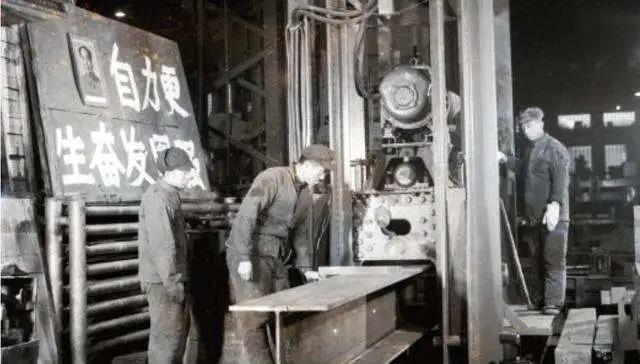
In the spring of 1966, all piers of the main bridge were flooded. However, given the tense international situation, China was strengthening combat readiness for "three-line construction". The construction of the bridge ran into new shortage of materials. At the same time, if there were a war, the bridge would surely be bombed, so there was doubt whether it was necessary to complete it. The Ministry of Railway started an investigation in Nanjing upon the instruction of Premier and determined the principle of "simplified construction, fast opening, durability, readiness to bombings, and post-bombing repairs." Premier instructed that the construction continue, steel beams still erected to get railway through, the bridge for highway traffic and ancillary works be simplified, and the investment be minimized when possible. The bridge construction was fully resumed again.
Premier Zhou even made choices of street lights on the bridge and sculptures on the bridgehead. He believed that street lights on the bridge should be the same as those on the Tiananmen Gate tower because Nanjing Yangtze River Bridge was a symbol of the Chinese nation's ethos. White magnolia lamps were chosen. Sculptures on the bridgehead should highlight "three red flags" (the General Line, the Great Leap Forward, and the People's Commune) at that time. Good materials should be used and the color should be bright. The red color should never fade. Sculptures of human figures should be representatives from workers, farmers, soldiers, students, and businessmen.
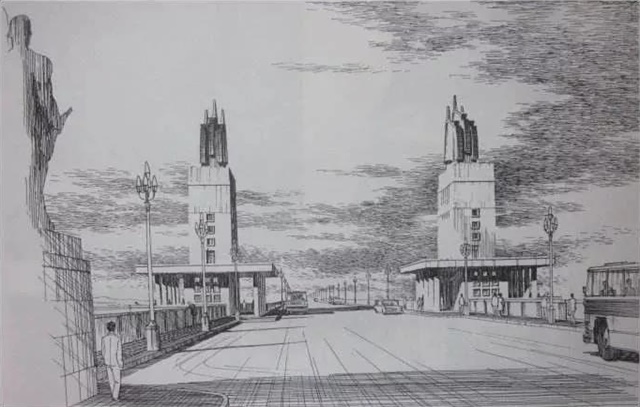
After Nanjing Yangtze River Bridge was completed and opened to traffic, in order to publicize this great achievement, the Central Studio of News Reels Production specially made a color film documentary named Nanjing Yangtze River Bridge. On May 13, 1969, Premier reviewed and approved the film and instructed, "We can export this film".
Stories Live on
During the discussion on the design scheme of the bridge approach for highway traffic, there was a heated debate over two options. One was a two-way curved arch bridge scheme. This was a novel form with distinctive national characteristics. Supporters believed that it offered such advantages as low cost, low material consumption, large load capacity, and beautiful form that met the construction principle of "achieving greater, faster, better and more economical results". The other option was "high filling". Slope was made from soil to replace a large section of bridge approach for highway traffic. The construction unit argued that the latter was labor-intensive and time-consuming, ugly in appearance, unfriendly to traffic flow, and harmful to a large area of farmland, so it insisted on adopting the two-way curved arch bridge scheme. According to the newspaper reports that year, the practical application of this scheme in Nanjing Yangtze River Bridge encountered many difficulties, such as continuous arch, construction on bends, heavy load, and railway crossing. Nevertheless, all of those difficulties were eventually overcome.
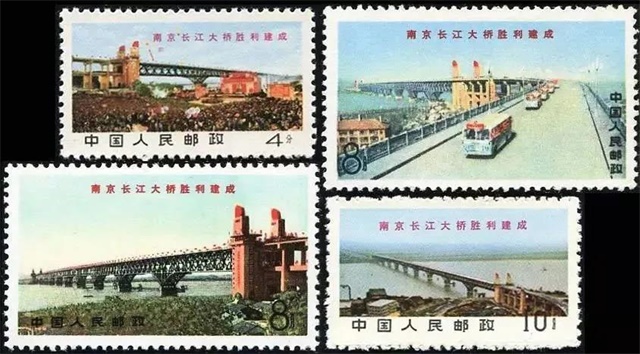
We had no one to rely on but ourselves in building Nanjing Yangtze River Bridge. It was a painstaking construction process. Many problems were solved from scratch and slowly through trial and error until successful practice. As an engineer who was in charge of the pre-stressed beams recalled, after the collapse of Sino-Soviet relations, the Soviet Union withdrew their experts and refused to export steel beams and rolled steel. What's worse, the section of Yangtze River in Nanjing was located in the lower reaches where the river was wide and waters were deep and turbulent. Building the bridge in Nanjing was much more difficult than that in Wuhan. At that time, the construction team made many experiments. For example, the beams used for bridge approaches on both sides of the bridge had to be processed with draw tubes because the original embedded iron tubes became unfeasible due to the lack of thin sheet iron to form thoroughfare. Technicians tried bamboo tubes, rubber tubes, steel tubes, etc. until they finally selected a wire mesh tube. Their successful trial production of pre-stressed reinforced concrete beams with Freyssinet beaded post-tensioning method also created a precedent of the application of pre-stressed system in manufacturing large concrete bridges in China.
Bridgehead is an iconic building of Nanjing Yangtze River Bridge, and there are little-known stories behind it. Academician Zhong Xunzheng, the designer of the bridgehead, recalled that the three red flags that people saw later were steel plate coated with red paint. In fact, those red flags were initially expected to be "glittering". The design was to fix steel plates on a steel frame, then pave a layer of surface materials on the steel plates, and finally embed the surface materials with vermilion glass sheets produced by Nanjing Glass Factory, so that the red flags would glitter in the sun. However, in order to meet the construction deadline, the glass fragments produced by the glass factory varied in color. When paved, the flags looked unsightly red and black. The representative in charge of engineering supervision said, "How come the three red flags become so bad? Remove all of them!" So the glass layers were all removed and a layer of red paint was applied in emergency.
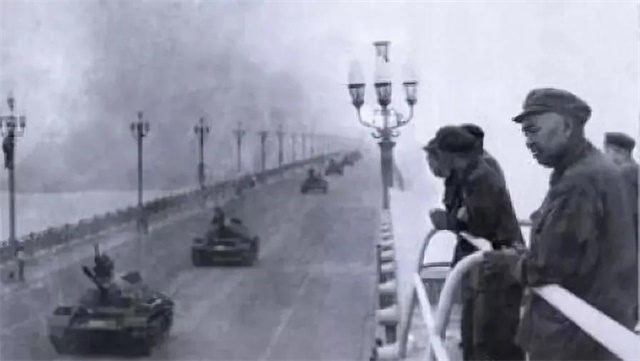
On September 21, 1969, Chairman Mao Zedong, accompanied by Xu Shiyou, then commander of the Nanjing Military Region, visited Nanjing Yangtze River Bridge with great enthusiasm. Standing on the bridge, the Chairman asked Xu whether the carrying capacity of the bridge was large enough to meet the needs of combat readiness. In order to get an accurate answer, Xu then transferred an armored regiment from North Jiangsu to cross Nanjing Yangtze River Bridge. On September 26, 80 tanks and more than 60 vehicles of various types were lined up in a row, with a distance of 50m between them. The entire fleet stretched for nearly 10km and passed the bridge safely.
Today, Nanjing Yangtze River Bridge, after more than 50 years of ups and downs, has always been a landmark in Nanjing and a symbol of Chinese culture. It still stands strongly above the long Yangtze River, protecting pedestrians and travelers on the move, telling the extremely hard and bitter history of predecessors, and witnessing the vicissitudes of the great rejuvenation of the Chinese nation.